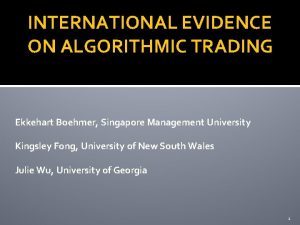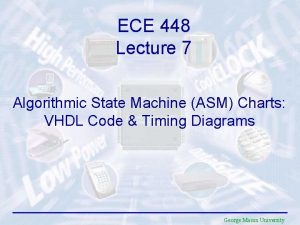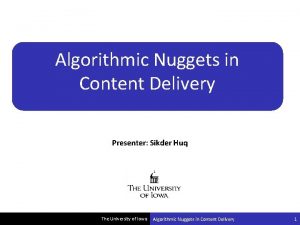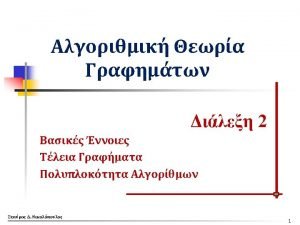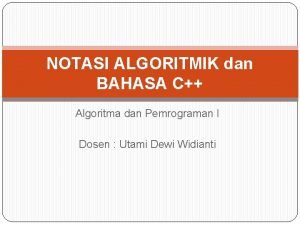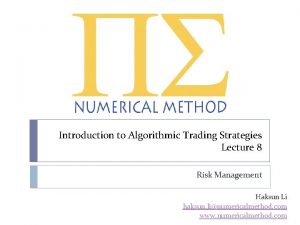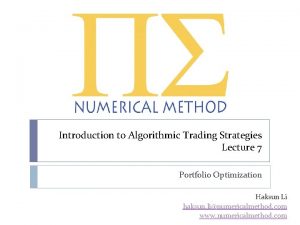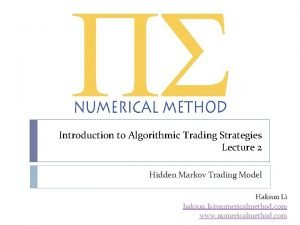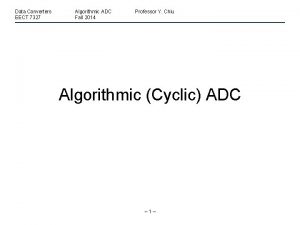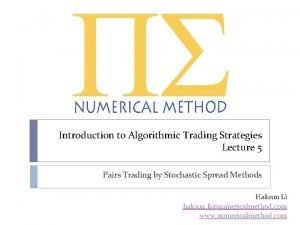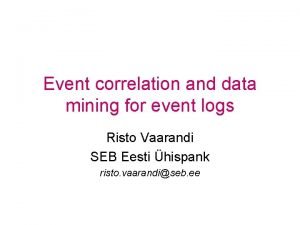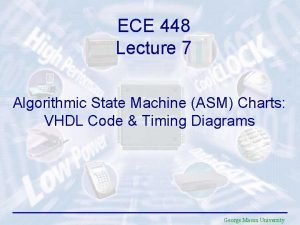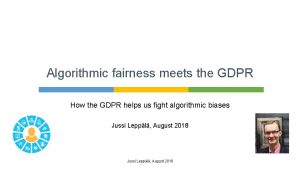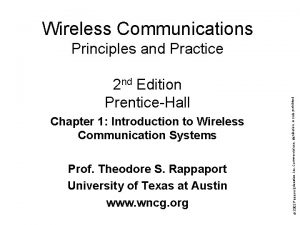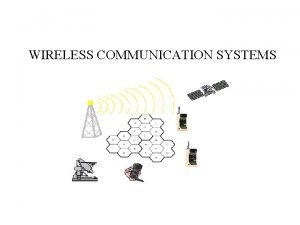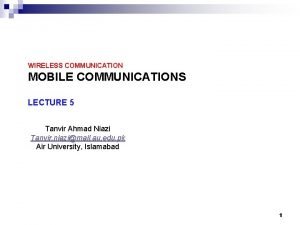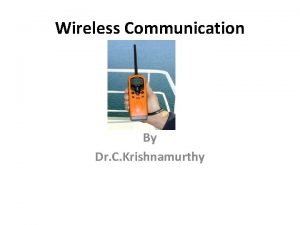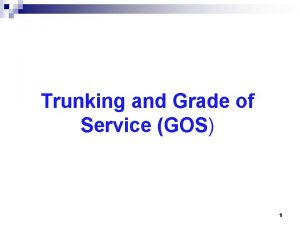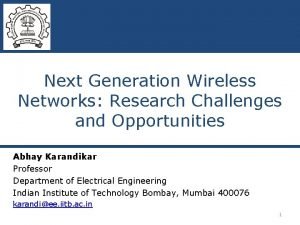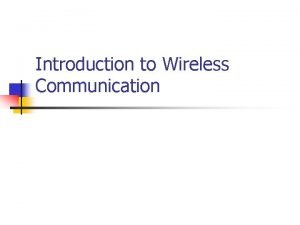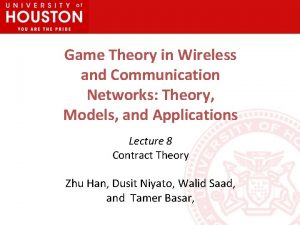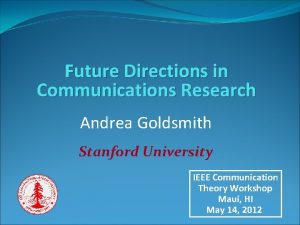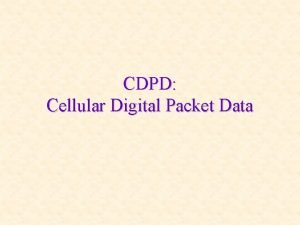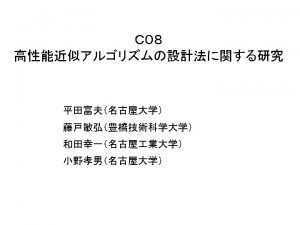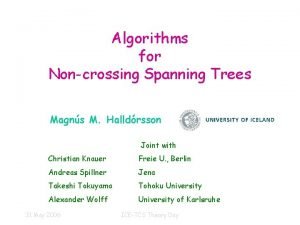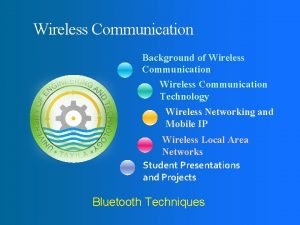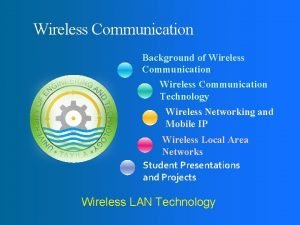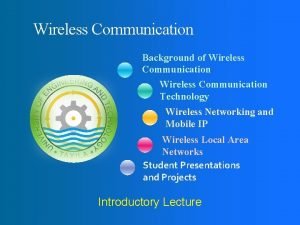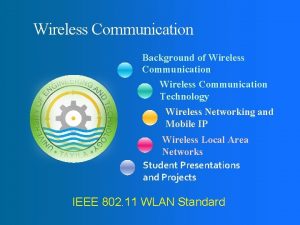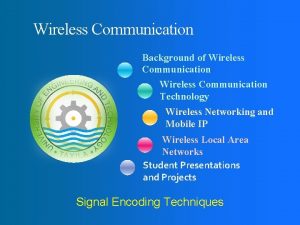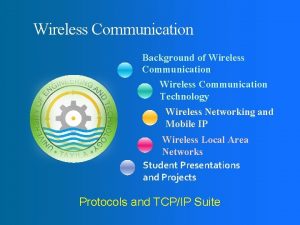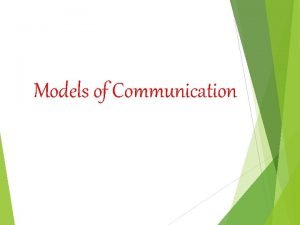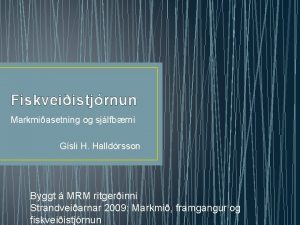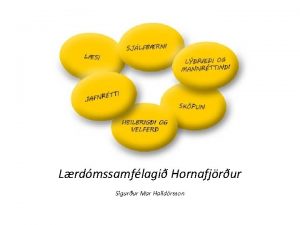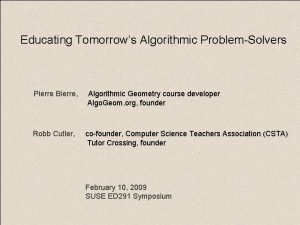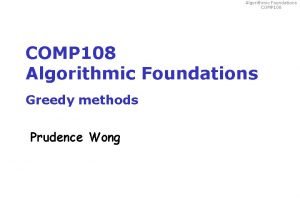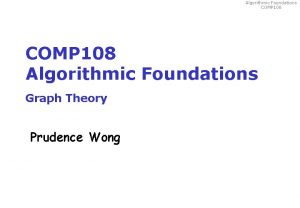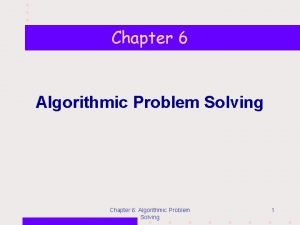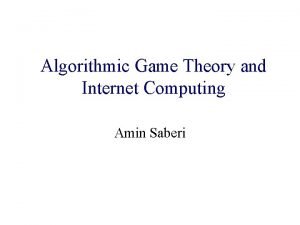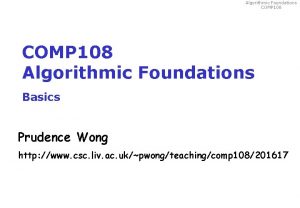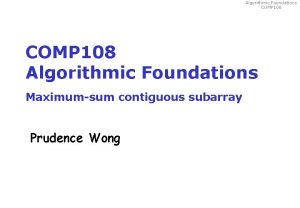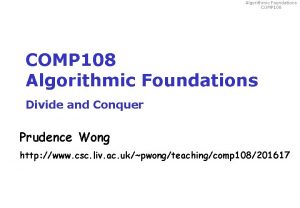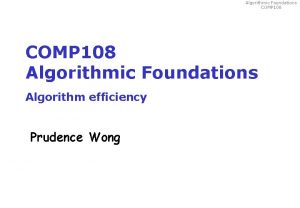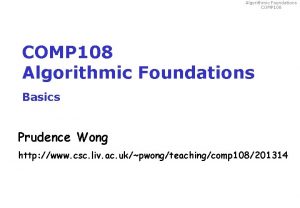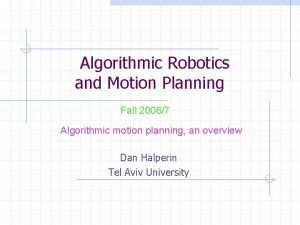Algorithmic Models of Wireless Communication Magns M Halldrsson




























- Slides: 28

Algorithmic Models of Wireless Communication Magnús M. Halldórsson Reykjavik University, Iceland EWSCS, 7 March, 2013 11/1

It’s Wireless World GSM 3 G Wi. Fi Ad-hoc P 2 P Wi. Max Mobility Sensor networks Ambient Ubiquitous Pervasive EWSCS, 7 March, 2013 11/2

Algorithmic Agenda • How to model wireless communication – Particularly, interference – Capture realism – Analytically feasible • How to solve fundamental problems – Algorithmic strategies – Structural properties • Modus operandi: – Ignore constant factors EWSCS, 7 March, 2013 11/3

MODELS OF INTERFERENCE EWSCS, 7 March, 2013 11/4

Tradeoffs in Models Realism Generality Models Usability for algorithms Usability for analysis EWSCS, 7 March, 2013 11/5

Models for Interference • Two standard models in wireless networking Protocol Model (graph-based, simpler) Physical Model (SINR-based, more realistic) EWSCS, 7 March, 2013 11/6

CS Models: e. g. Disk Model (Protocol Model) Reception Range Interference Range EWSCS, 7 March, 2013 11/7

Inductive independence • There is a disc that intersects at most 3 mutually non-overlapping discs • Efficient 3 -approximate algorithms for: – Independent set (maximize throughput) – Coloring (minimize latency) – Weighted independent set (maximize sustained throughput) EWSCS, 7 March, 2013 11/8

EWSCS, 7 March, 2013 9 11/9

EE Models: e. g. SINR Model (Physical Model) EWSCS, 7 March, 2013 11/10

EWSCS, 7 March, 2013 11/11

Hard instances for traditional graph-based models • One link per slot, in graph-based models • Single slot, in physical model (with appropriate power control) EWSCS, 7 March, 2013 11/12

Signal transmission • Radio signal diminishes as it travels • In the ideal case, the path loss is proportional to where d : distance : path loss constant (usually, 2 < < 6), depends on medium EWSCS, 7 March, 2013 11/13

=2 Uniform power Affectance u 2 3. 5 u 0. 16 5 5 w 2. 04 w H, Wattenhofer ‘ 09 EWSCS, 7 March, 2013 11/14

=2 Power control Affectance u 2 Pu = 1 3. 5 u 0. 48 5 5 Pw = 3 w 0. 68 w H, Wattenhofer ‘ 09 EWSCS, 7 March, 2013 11/15

=2 Affectance v u 3 3 u 0. 56 4 4 0. 56 3 w w EWSCS, 7 March, 2013 11/16

Core problems of wireless scheduling • Given: A set of communication links Capacity problem: Find the maximum size feasible subset of links EWSCS, 7 March, 2013 11/17

Core problems of wireless scheduling • Given: A set of communication links Capacity problem: Find the maximum size feasible subset of links Scheduling problem: Partition the links into fewest possible slots EWSCS, 7 March, 2013 11/18

The job of the MAC layer • MAC : Media Access Control • The nodes in a wireless network communicate over a shared resource: the spectrum • The task of the MAC layer is to coordinate access to the spectrum: – Who gets to talk when EWSCS, 7 March, 2013 11/19

Results on Capacity and Scheduling Capacity has constant-factor approximations for: • Uniform power in R 2, with >2. [Goussevskaia, H, Wattenhofer, Welzl‘ 09] • Any (reasonable) fixed power in general metrics [H, Mitra, SODA‘ 11] • Arbitrary power control [Kesselheim, SODA‘ 11] – Also, more recently, with power limitations [Wan‘ 12, Kesselheim‘ 12] • Uniform power with spectrum sharing (cognitive radio) [H, Mitra‘ 12] • Fixed power with variable data rates [Kesselheim‘ 12] • Uniform power with a distributed learning algorithm [Asgeirsson, Mitra ‚‘ 11] Scheduling has constant-factor approximation for: • Linear power [Fanghanel, Kesselheim, Vöcking’ 09; Tonoyan‘ 11] • Equal-length links [Goussevskaia, Oswald, Wattenhofer, ’ 07; H ‘ 09] EWSCS, 7 March, 2013 11/20

Weighted degree of v Weighted inductiveness • A link lv in a set S is t-good if av(S)+a. S(v) ≤ t. • A set of links is is t-inductive independent if any subset contains a t-good link • [H, Holzer, Mitra, Wattenhofer, SODA’ 13] Any set of links in any metric is O(1)-inductive independent, except possibly when using uniform power. • Applications: – – – Capacity algorithms (Multi-hop) distributed scheduling Connectivity Spectrum sharing auctions [Hoefer, Kesselheim, Vöcking ‘ 11, ‘ 12] Dynamic packet scheduling Kesselheim, Vöcking, DISC‘ 10 EWSCS, 7 March, 2013 11/21

EXPERIMENTAL WORK EWSCS, 7 March, 2013 11/22

Experimental Work „Putting theory to the test“ EWSCS, 7 March, 2013 11/23

Testbed experimentation EWSCS, 7 March, 2013 11/24

Experimental Group Ýmir Vigfússon Students Helga Guðmundsóttir Henning Úlfarsson Eyjólfur Ingi Ásgeirsson Joe Foley Sveinn Fannar Kristjánsson Axel Guðmundsson Sindri Magnússon EWSCS, 7 March, 2013 11/25

Theory Group • Pradipta Mitra, post-doc • Marijke Bodlaender, Ph. D. student • Hörður Ingi Björnsson, M. S. student • Eyjólfur Henning • Magnús EWSCS, 7 March, 2013 11/26

Other Collaborators • Sverrir Ólafsson, prófessor, Reykjavik University – Previously at British Telecom • Roger Wattenhofer, prófessor, ETH Zurich • Berthold Vöcking, prófessor, TU Aachen EWSCS, 7 March, 2013 11/27

Questions? Slides: Thanks to Wattenhofer Lab, ETH EWSCS, 7 March, 2013 11/28
 What are wireless devices and the wireless revolution
What are wireless devices and the wireless revolution Algorithmic trading singapore
Algorithmic trading singapore Asm chart examples
Asm chart examples Computational thinking flowchart
Computational thinking flowchart Algorithmic nuggets in content delivery
Algorithmic nuggets in content delivery Algorithmic cost modelling
Algorithmic cost modelling Algorithmic graph theory and perfect graphs
Algorithmic graph theory and perfect graphs Notasi algoritmik adalah
Notasi algoritmik adalah Introduction to algorithmic trading strategies
Introduction to algorithmic trading strategies Introduction to algorithmic trading strategies
Introduction to algorithmic trading strategies What is output in algorithm
What is output in algorithm Low frequency algorithmic trading
Low frequency algorithmic trading Introduction to algorithmic trading strategies
Introduction to algorithmic trading strategies Algorithmic adc
Algorithmic adc Introduction to algorithmic trading strategies
Introduction to algorithmic trading strategies Event correlation algorithm
Event correlation algorithm Algorithmic state machine examples
Algorithmic state machine examples Gdpr algorithmic bias
Gdpr algorithmic bias Modal and semi modal verbs
Modal and semi modal verbs Wireless communication introduction
Wireless communication introduction Paging wireless communication
Paging wireless communication Co channel interference
Co channel interference Advantages of wireless transmission
Advantages of wireless transmission What is trunking and grade of service
What is trunking and grade of service Next generation wireless communication market
Next generation wireless communication market Disadvantage of wireless communication
Disadvantage of wireless communication Game theory in wireless and communication networks
Game theory in wireless and communication networks Stanford wireless communication
Stanford wireless communication Cdpd in wireless communication
Cdpd in wireless communication

